"To use Newton's words, our efforts up till this moment have but turned over a pebble or shell here and there on the beach, with only a forlorn hope that under one of them was the gem we were seeking. Now we have the sieve, the minds, the hands, the time, and, particularly, the dedication to find those gems--no matter in which favorite hiding place the children of distant worlds have placed them."
-Frank Drake and Dava Sobel
Looking up at the canopy of stars in the night sky, and realizing that each point of light is a star system not so unlike our own, one can't help but wonder about those extraterrestrial worlds that we know exist around a tremendous fraction of them.
With hundreds of billions of stars and (possibly) upwards of a trillion planets, it's been known for a very long time that there's a definite, real chance that other intelligent life exists right now in our own galaxy.
For decades, we've broadcast radio messages out into space, and built giant arrays of radio telescopes, searching for those same types of signals originating from other sources in the night sky.
Of course, this is a tremendously ambitious task. Even a very intense radio signal will lose its power the farther away from it you are. The problem, of course, is that each time you double the distance away from a radio transmitter, you pick up only one-quarter of the intensity you would have received at a closer distance.
Even special setups that collimate the beam -- assuming, for example, that an alien species had the idea to point their beam directly at us -- still suffer from this. Even the best setups for beam collimation of light still wind up having the signal spread out over a substantial angle, and still suffers from the problem that the farther away you are, the less intensity you receive squared: a radio transmitter ten times as far away needs to be a hundred times as powerful for you to pick up the signal.
It's difficult to imagine that a civilization-generated signal located thousands of light-years away, across the galaxy, would be able to outshine the cosmos by time it reached us.
But we do have one sterling example of a beam we can collimate to an outstanding precision: beams of extremely high-energy particles!
A pulse of high-energy particles, such as the kinds we create at the Large Hadron Collider, above, achieves speeds around 99.9999% the speed of light, more closely collimated than even the beam from a laser. Now, we sometimes receive high-energy particles -- originating from space -- here on Earth. When we do, how do we identify them?
They strike the Earth's upper atmosphere, producing a shower of particles. Neutrinos and muons make it to the ground, where -- if we're lucky and prepared -- we can identify them. Launched from Earth, however, the charged particles would certainly hit the atmosphere on the way out. And since muons are unstable, by time they arrived at their destination, the only recognizable signal would be the neutrinos!
In other words, if we wanted to send a signal to an alien world, alerting them to our presence, our best bet would be to send them collimated, patterned pulses of neutrinos!
What's remarkable about this -- even though it wasn't the experiment's intention -- is that we just demonstrated the ability to detect exactly this type of signal!
How's that?
Last week, scientists announced -- for the first time -- that they sent a neutrino signal through the solid rock of the Earth, in binary morse code, and received it at a neutrino detector over a kilometer away!
Despite the fact that only one out of every ten billion neutrinos can be detected in an apparatus like the MINERvA detector, above, and that the effective transmission rate was only one bit every ten seconds, by repeating the message many times, the detector was able to build up the binary pattern of zeroes and ones, eventually decoding the binary message!
What was the message? Why, the name of the particle itself: N-E-U-T-R-I-N-O.
If someone, thousands of light years away, is sending a repeating neutrino signal towards us, we've just demonstrated the capability of detecting and identifying exactly that type of communication.
The signals of intelligent life could already be there. We just need to listen in the right way, and neutrinos might be the answer!
(Also, a big thanks to Randall for the elegant new blog banner; hope you like it!)


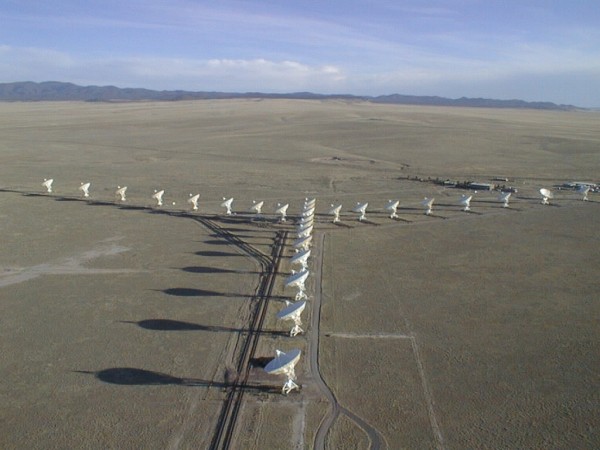
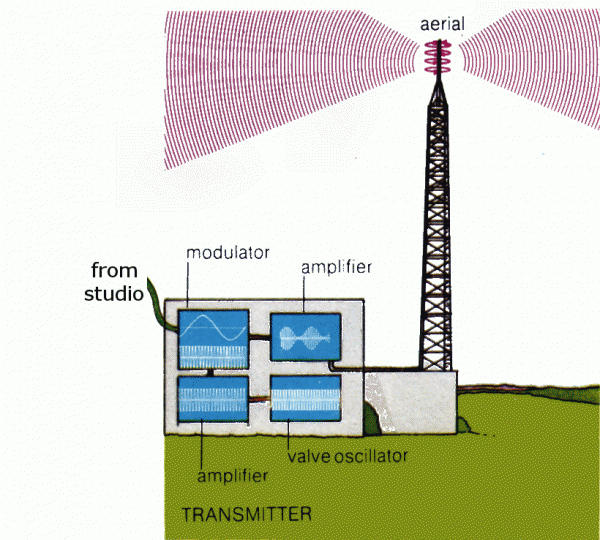
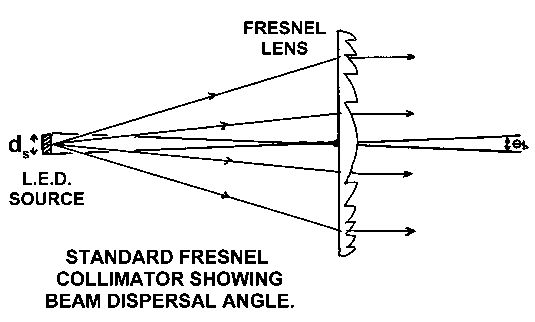
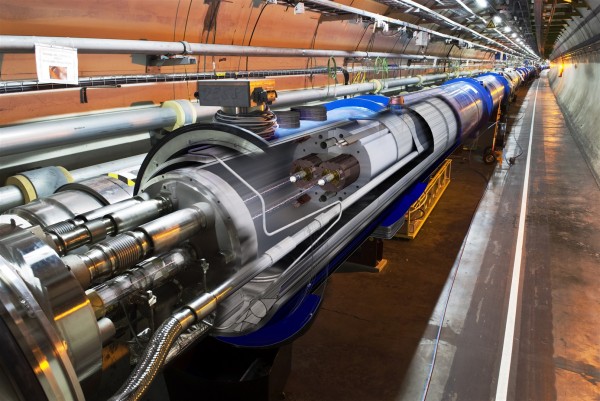
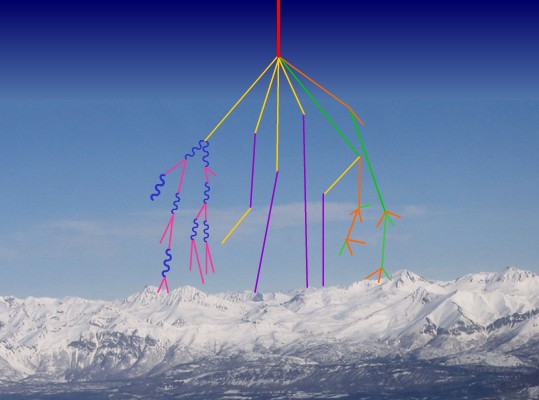
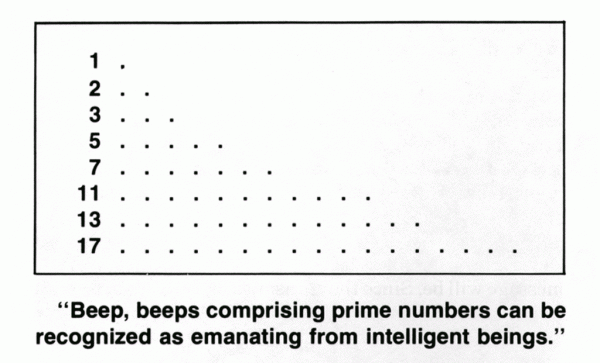
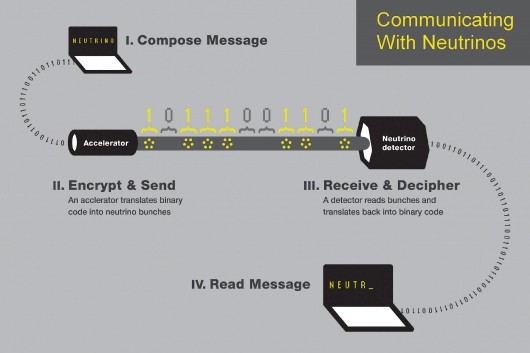
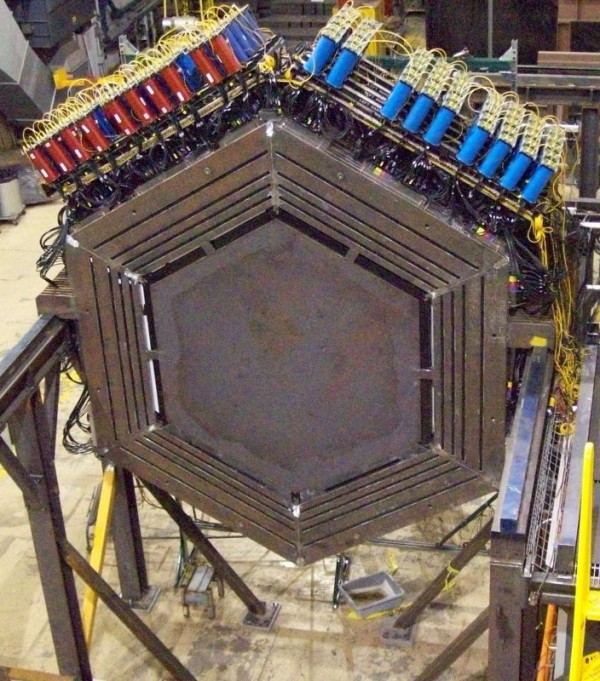
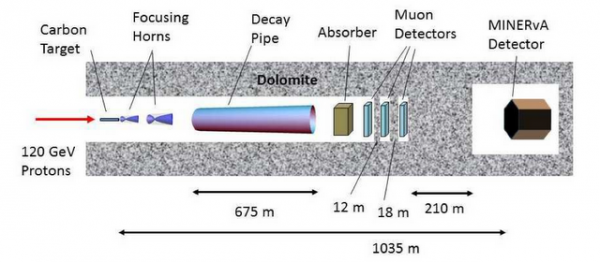
Is there anything on the horizon whatsoever that would bring the ease of detecting neutrinos down by a couple orders of magnitude?
I had recently been reading a post about an anomalous burst from a pulsar, presumably from a massive object falling onto it's surface. It got me thinking that that might be a way to communicate across a galaxy; line up a bunch of big rocks and throw them into a neutron star with a mass driver, in code. The flashes could be seen for millions of light-years in every direction, or at least in the direction of the spreading polar beams.
Of course, you'd have to get to the pulsar in the first place, and have the ability to toss something the size of Vesta around, or would it require planet-sized masses to be seen far away?
Let's say we wanted to send a signal to an alien at our second-nearest star. Given the maximum neutrino flux from the LHC's ultimate design (not the current operational design), the best beam collimation we can currently create, and an extremely generous 1km*1km detector area on the alien planet (you can make the depth of the detector a few hundred m if you wish) what would be the effective bitrate at the receiver?
Not a very good way to communicate IMO. You have a highly focused beam, great for signal coherence, awful for actual sending and receiving since the signal doesn't propagate spherically in all directions. Imagine trying to hit a detector the size of several meters over 50 light years distance :D
My bet is quantum transmitions (once we are advanced enough). Using entanglement to code messages. For cosmic distances, light speed is snail speed if communication is the goal.
There is already a neutrino communication experiment going on. It is based on nuclear bombs. Since there are no natural ways to produce the signature of a fission bomb, space aliens can read the message "we exist, and are technologically advanced enough to have nukes".
On the other hand, since use of fission bombs has stopped, the aliens might read that as "we have nuked ourselves back to the stone age".
The sad thing in general is if we don't find a way around GR and SR, space travel, communication and that whole Star Trek/Star Wars space age we all like is not gonna happen. Even if we make awesome propulsion systems, there is an issue with time. So unless we discover some higher dimensions or sub space fields where things are not like in GR and SR (in process discarding locality), I don't see how interstellar travel and communication is gonna work.
what would a MINERVA receiver look like? would it have a set up similar to the VLA or would it have to be a receiver spread across multiple locations on (above?) the planet?
You say a nutrino beam from the LHC is "more closely collimated than even the beam from a laser." I am wondering exactly how much more? And how difficult would it be to aim the beam to actually hit, say a planet orbiting a star 10 light years away??
Yet again it is demonstrated there's nothing new under the Sun: Lem did the neutrino communication thing in His Master's Voice.
@ MadScientist
1km x 1km x 100s of m isn't necessarily that generous... our IceCube neutrino observatory is 1km^3 and we're pretty new at this. If they have neutrino observatories at all, then they might be much bigger.
I have nothing helpful to add beyond that. :/
@ Sinisa Lazarek
You can't encode information in quantum entanglement. The only thing you can know after after measuring your particle and collapsing the entanglement is that the other person will see a correlated result if and when they measure theirs. Which you already knew. You can't tell if they've done so, you can't control what they see.
But maybe something else will turn out to be possible... I know that speed limit sucks for our Star Trek fantasies. :(
I've found it interesting for some years reading about 'intelligent' life on other planets. From what I can tell Physicists use the term to mean 'Other Physicists.' As a biologist the term 'intelligent life' might mean pigs, parrots, dolphins, some cephalopods, elephants, Welsh Corgis, etc. In that case the chances of them detecting signals, neutrino or no, are pretty slim.
Steven: If a planet has parrots and pigs, I think there are decent odds it may also have Physicists.
@ CB
In theory, if you were somehow able to manipulate the spin of one entangled particle? Couldn't that be used as a bit generator?
How about we all accept the time-distance binding and admit that it is far more likely and realistic that we will invent the future right here than find out about it from some green guy who described it in neutrinos tens of millions of years ago.
The "point"(s) was that neutrinos might offer a better cross-galaxy, cross-galaxy-group, communication channel. The logic being that neutrinos wouldn't be hindered in transit the way electro-magnetic channels are â by stars and dust. My point is that both channels are light-speed bracketed, which means that broadcasts (EM or neutrino) would have had to have been initiated a long time ago, by entities far superior to us at this time. Nobody seems willing to talk to the hubris that fuels an interest in inter-galaxy broadcasts. One must assume that technological development can proceed far faster on one planet than should two species attempt a collaborative effort across a hundred year delay channel. So, any motivation by one civilization to broadcast their knowledge would in essence, be what we call tagging. Interstellar graffiti. To invest great chunks of research money towards learning to read tags smacks of the kind of motivation that drives a person to develop a series of elaborately placed mirrors and lenses such that they can cheat off the smart kid's test. Let's put humanity's most expensive money, basic research money, towards research, towards figuring out how this universe works and towards knowing how to figure out how this universe works. Neutrinos as communication medium? An interesting research question. No need for the Buck Rogers sales pitch.
One might imagine a scenario in which a far superior culture has established a space/time-tunneling com channel â instantaneous across any distance â but has found no other culture to talk to. They might decide to broadcast a do-it-your-self tutorial on how to build a subspace transceiver, and to broadcast this tutorial across standard EM channels or using an exotic channel as suggested by this neutrino example. But I am more interested in the implications suggested by an interest in cross-galaxy communication, or as was suggested by one comment, in human space travel. Go where? Why?
One interesting practical(?) application of neutrino communication would be in computation. A "chip" designed with neutrino com (in place of the conductors we use today) would be a chip in which transistor placement and association would cease to be an issue â opening up the possibility of three dimensional chips. HOWEVER⦠the very thing that makes neutrinos interesting in this application â weak interaction â makes them almost impossibly poor candidates for simple and energy efficient transceiver design (witness the size and complexity of the OPERA receivers). But should one be designing the computer of the future, and should one really want to go exotic, quantum tunneling and entangled particles solve the same problems and aren't light-speed limited.
Why the dickens would communicating with neutrinos be preferable to communicating with photons of the same energy?
If the photons have the same energy as the neutrinos, it's possible to collimate them just as well as the neutrinos (and much, much, much easier, given technology). Photons are easier to create and they're easier to detect. Because so much of the interstellar medium is transparent to them, they're almost as good to transmit.
There are projects underway to do SETI with optical photons (I believe Horowitz at Harvard has one), and I think there's good reason to send messages in the optical rather than in the microwave. But I can't think of any reason why an alien civilization would send messages with neutrinos rather than photons.
My guess is, if a spacefaring species has any desire to send messages to other solar systems, it would be because they have the ability to travel to such systems in a reasonable amount of time. And if they have that technololgy, they may also have the ability to communicate using faster-than-light media. And if they have neither ability, they'd probably think it's in their best interests to show up here first, assess the situation in real time, and signal us from up close.
On the other hand, since use of fission bombs has stopped, the aliens might read that as "we have nuked ourselves back to the stone age".
Or "We've done some tests, and now we're saving our nukes for just the right enemy to use them on."
(I'm kinda thinking that if they can pick up neutrinos from nukes on Earth, they're also likely to pick up some radio noise, and learn shitloads about us by listening to the Beeb.)
Awesome post! I love how you sum up the state of things in posts like this and get us excited about current physics! The "Neutrino" message reminds me of the earliest uses of the telegraph and telephone. Maybe we'll be communicating with neutrinos through the center of the earth one day? But the energy cost is so high... Then again, think of the Sun, and nuclear power.
I like your idea Artor :) . But on the other hand, you'd have to wait for the light to reach the receiving end, which could take a long time. I like thinking about possible methods of superluminal communication, like wormholes or warp drives.
I think some of you may be missing the point. The point is not that neutrinos would be a good way to communicate complex messages. I believe the idea is that neutrinos could be a good way to communicate a simple message that is unambiguously originated by an intelligent sender. EM communication over long distances tends to lose its intensity (as Ethan mentioned) and such low intensity received EM signals can be overwhelmed by natural sources. Neutrino messages would not suffer such problems. IOW, the purpose os a neutrino message would be simply to answer the question "Is there anyone else out there?", not to provide any kind of complicated message.
As far as SETI goes, I think it may well be that there is intelligent life out there but that they aren't trying to communicate. I realize that trying to figure out the hypothetical motivations of alien species is a ridiculous thing, but using the logic we do, it would be unlikely that they'd be trying specifically to communicate with us. We don't specifically try to send messages out to other hypothetical intelligent species. Instead we listen for their messages. Why? I would suggest that it's because we want results NOW, rather than in the hundreds or thousands of years in the future that it would take for our message to reach its target and for us to receive a reply. What if there were other intelligent species, but they thought the same way? Wouldn't that lead them to just listen for us, rather than send us a message?
@ Sinisa Lazarek
That would break the entanglement and the spin you introduced would not be correlated with what was seen in the other particle.
Sorry, no FTL communication with entanglement. It sucks. :(
One thing that is interesting though is the implication that entanglement can operate faster than light *because* no information transfer -- and thus causality violation -- is possible.
@21 CB
You are correct. Thanx again for your explanations. I researched quantum information theory a bit more, and found what I didn't know before. The qubits in question are still sent classicaly. The teleportation is only of the states not the packets themselves.
I did however find some theories (way too much math for my grasp), but it boils down to this: if we find some proof that QM has some small non-linearity in it's base, that might in turn make FTL information sending possible at least on paper.
But this is with big IF and huge MIGHT.
The more I think about this whole human space travel thing the more worried I get about human beings and the limits or at least stochastic limits on human thinking. When one considers the distances involved, even should we only be talking about the local eighth of our own galaxy, one must contend with huge almost unimaginable transit times â in the hundreds or thousands or hundreds of thousands of years â at reasonable sub-light speed fractions. At these distances, spacetime isn't just an annoyance like going to the store or flying to Perth. At interstellar distances, spacetime is an energy barrier more substantial than any material barrier any human could ever build or imagine building. This barrier is so substantial and of such profound scale that it would make almost zero difference to the energy budget of an interstellar trip whether one pointed their space ship up towards the sky or down towards the earth. The extra fuel needed to first tunnel down through the full diameter of the earth before blasting out of earth's gravity well would hardly be noticed as compared to the full energy budget for a trip to your average milky way star. But as insurmountable are the energy requirements, the time requirements are much much more impractical. Complexity, the asymptote of evolution, is locality bounded. This is why computer chips get faster and do more the smaller they become. Distance kills complexity. And complexity doesn't stand still. Evolution makes sure of this. Complexity accelerates. But only where locality is honored. The notion that the product of research and development is slow enough that any human could take a thousand year hiatus is beyond absurd. At the current pace of the acceleration of the evolution of complexity, a thousand years most probably results in a completely unrecognized future in which no humans (as we would define them) exist at all. Certainly, humans would no longer the most advanced entity. The notion of human space colonization presupposes a laughable degree of philosophical provincialism â the notion that the evolution of knowledge and infrastructure doesn't exist â that place matters more, than what happens or can happen or will happen, in place. We kid ourselves when we imagine the future as a better and better place for humans. The universe is a far more serious and far less sentimental sandbox. The universe selects complexity handling schemes and evolves towards the accelerated dissipation they afford. If we chose to ignore this most unforgiving of universal laws, if we choose to dick around building galactic Winnebagos⦠well, we will all end up as food or fuel for some entity with less of a "Little House On The Prairie" westward expansion pathetic poetic mentality. We have a choice(?). THE future will happen â either because of (or despite) human effort. One thing that is sure, dragging almost motionless through spacetime-frame molasses doesn't in any way aid the evolution of complexity handling. Being disconnected from and distant from the machinery on culture's leading edge is a strangely Quaker-like approach to the advancement of knowledge and technology. Paintiung "NASA" or "ESA" on your buggy doesn't change what it is or why you are in it.
I still think that the aliens are holding off from communicating with us until we clean up our act. A truly advanced civilization would realize that warfare is to humanity what an auto-immune disease is to a single human body. They would probably long ago have developed some mechanism of treating such diseases. Please don't think I'm a kook, but it is not impossible that this treatment could come as posited on the website http://www.bashar.org
@24
You are a kook squared.
Matter inside neutron stars is capable of catching neutrinos. It would be possible to build neutrino telescope using a kind of laboratory made high density matter
Here's a story about looking for neutrinos at the South Pole http://bit.ly/1JoJcfw